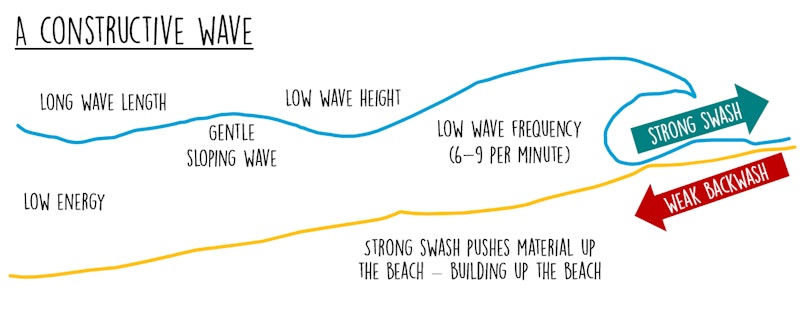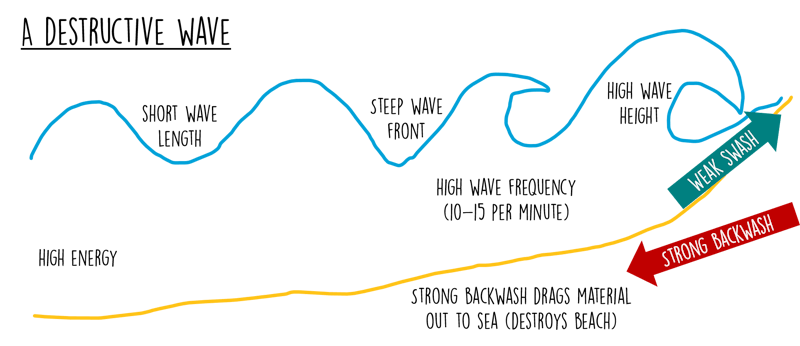Study Notes
GCSE Geography | What Affects Waves? (Coastal Landscapes 1)
- Level:
- GCSE
- Board:
- AQA, OCR
Last updated 17 Oct 2024
Waves are what makes our coastline so dynamic - shaping the coastline through erosion and deposition. Waves occur when wind energy is transferred to the sea through friction on the water's surface.
Important key terms:
- Crest - the point at the top of a wave
- Trough - the base of a wave
- Wave height - the distance between the trough and the crest
- Wave length - the distance between two wave crests
- Wave frequency - how many times the waves break in a minute
- Swash - the waves running up the beach
- Backwash - the waves returning to the sea due to gravity
What affects wave size?
The wave size is dependent on energy - but what affects the amount of energy in a wave?
- Wind speed - energy is transferred from the wind to the waves so stronger winds results in larger and stronger waves
- Time the wind has been blowing - if the wind has been blowing for a long time it can transfer more energy to the waves, making them stronger
- The fetch - this is the distance that the wind has blown over (essentially the distance between two coastlines), so if the fetch is longer then more energy can build up. This is why the Cornish coast is one of the best places to surf in the UK as the fetch across the Atlantic Ocean is much bigger than the fetch across the North Sea, so the waves on the south-west coast are much bigger than those on the east coast.

Types of wave
- Constructive waves:
- Weak backwash compared to swash
- Long wavelength, but low wave height
- Less frequent gentle waves (6-9 waves per minute)
- Break gently so spread out over a wide area
- Found in sheltered bays - build up sandy beaches
- More common in summer than winter
- Adds material to the beach, hence 'constructive'

- Destructive waves:
- Strong backwash compared to swash
- Short wavelength, but high wave height
- Frequent waves (10-15 waves per minute)
- Waves break with a lot of energy, concentrated in a small area - can comb the beach of material
- Found in more exposed areas of coastline
- More common in winter than summer
- Removes material from the beach, hence 'destructive'

You might also like
Daily Email Updates
Subscribe to our daily digest and get the day’s content delivered fresh to your inbox every morning at 7am.
Signup for emails